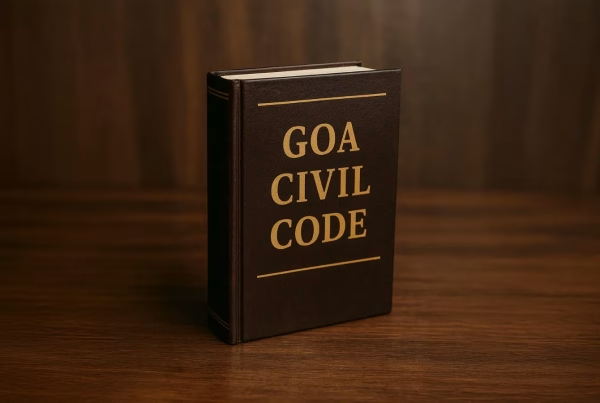Every year, as the moonlight bathes North India in a silver glow, millions of married women look skyward — waiting, praying, and smiling through their hunger. This is Karva Chauth, one of India’s most cherished festivals of love and devotion. Beyond the shimmer of mehendi, bangles, and sarees, it’s a reflection of faith, endurance, and emotional strength. But have you ever wondered — Why is Karva Chauth celebrated? Who do we pray to on Karva Chauth? What is Sargi? And does the fast really make a husband live longer? Let’s uncover the meanings and myths behind this timeless tradition.
Why is Karva Chauth Celebrated?
The word Karva means an earthen pot, and Chauth means the fourth day — the festival falls on the fourth day after the full moon in the Hindu month of Kartik. Traditionally, married women observe a nirjala fast (without food or water) from sunrise to moonrise, praying for their husband’s long life and well-being. The ritual’s roots are ancient — dating back to times when men ventured far for wars or trade. Women would come together to pray for their safety and exchange karvas, small clay pots filled with grains, as symbols of friendship and solidarity. Over time, this evolved into a festival that celebrates not just marital love but also the unspoken sisterhood among women who support and strengthen one another.
Who Do We Pray to on Karva Chauth?
The divine feminine is at the heart of Karva Chauth. Women offer prayers to Goddess Parvati, revered as the symbol of marital bliss and strength, and to Lord Shiva, the eternal partner. They also invoke Lord Ganesha and Lord Kartikeya, the children of the divine couple, to bless their family’s prosperity.
When the moon rises, it becomes the visible form of divine energy — calm, constant, and pure. Women offer water (arghya) to the moon, viewing it through a sieve and then turning their gaze to their husbands. This act represents the belief that the serenity of the moon’s energy is being channelled into their married life.
What is Sargi?
The day begins before dawn, with a loving ritual shared between generations — Sargi. Prepared by the mother-in-law for her daughter-in-law, this pre-sunrise meal includes sweet pheni, fruits, dry fruits, and savouries. But Sargi isn’t just about food; it’s a gesture of acceptance, blessings, and love.
In many modern families, Sargi has become an expression of care that crosses boundaries — mothers, sisters, even husbands now prepare or share it, symbolizing togetherness rather than hierarchy.
The Legends Behind Karva Chauth
Like most Indian festivals, Karva Chauth finds its power in stories — tales of faith that have travelled through time, each adding a new layer of meaning. The most well-known legend is that of Queen Veeravati. A devoted wife, Veeravati observed her first Karva Chauth after marriage. She began her fast with great enthusiasm but by afternoon, she grew weak from hunger and thirst. Her seven loving brothers, unable to bear her suffering, tricked her into believing that the moon had risen — by lighting a lamp behind a tree. Thinking her fast was over, Veeravati broke it. Moments later, news arrived that her husband, the king, had died. Heartbroken, she wept and prayed to Goddess Parvati for forgiveness. Moved by her devotion, the goddess granted her another chance — and Veeravati’s husband was revived. Since then, the fast is believed to symbolize a woman’s strength to even overcome death through her devotion.
Another story tells of Karva, a woman so faithful and courageous that when her husband was caught by Yama, the god of death, she confronted Yama himself. Her unwavering love and fierce determination forced Yama to release her husband, symbolizing how true devotion can conquer even destiny.
In some regions, women also recall the story of Savitri and Satyavan. Savitri’s penance and unyielding love were so powerful that she followed Yama into the world of the dead and argued until he returned her husband’s soul. These stories, though symbolic, are all bound by one thread — the belief that love, when combined with faith, can transcend even mortality.
Regional Celebrations and Unique Traditions
Karva Chauth may be rooted in ancient North Indian culture, but today it’s celebrated widely across India and even abroad — from Punjab to California. In Punjab, the festival bursts with colour — women apply mehendi, dress in red and gold, and gather for the Karva Chauth Katha. They pass the karva (earthen pot) in a circle, singing folk songs that celebrate married life and feminine strength.
In Rajasthan, women decorate their karvas beautifully with mirrors and bright paint, and wear traditional leheriya sarees. In the desert towns, where the moon sometimes hides behind the dunes and haze, women climb rooftops to catch its first glimpse.
In Uttar Pradesh and Bihar, the fast is followed by community gatherings where the story of Karva Chauth is narrated aloud, and the first sip of water after moonrise is often taken from the husband’s hand — a tender gesture that seals the ritual.
In Himachal Pradesh, the day is linked with local harvest traditions — women pray for both their husband’s longevity and their family’s prosperity. In urban India and abroad, the ritual now transcends gender. Many couples fast together, seeing it as an expression of equality and shared emotion. Even in distant lands, NRIs celebrate it virtually — sighting the moon over video calls and sharing the same prayers across time zones.
Myth vs Reality: Does Karva Chauth Really Extend a Husband’s Life?
There is no scientific evidence to show that fasting on Karva Chauth directly affects a husband’s lifespan. The belief that it does stems from mythology, where devotion is seen as a spiritual force capable of influencing fate. In truth, the power of Karva Chauth lies not in biology but in emotion — it’s about faith, love, and the idea that devotion can protect those we care for. Modern understanding sees the fast as a symbol of discipline and mindfulness rather than a literal life-extending act. The fast becomes meaningful because of what it represents: the strength to sacrifice, the will to stay patient, and the love that finds expression through prayer. In that sense, Karva Chauth isn’t about controlling life and death — it’s about celebrating the resilience of the heart.
The Modern Moon of Love
In today’s world, Karva Chauth has taken on new shades of meaning. It’s no longer just a wife’s ritual — it’s often a mutual expression of love, where husbands fast in solidarity or share in the prayer. Despite evolving times, one thing remains timeless — the moment when the moon rises and a woman, dressed in red, lifts her eyes skyward. The world pauses as she offers her silent prayer — for love that endures, for bonds that deepen, and for the moon that always returns, however long the night may be.



